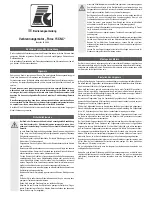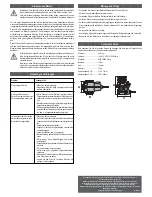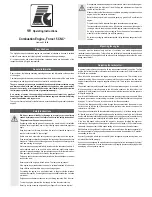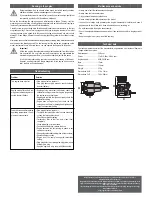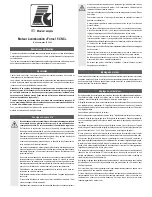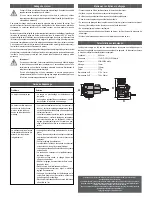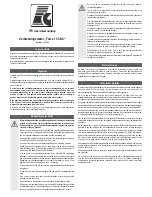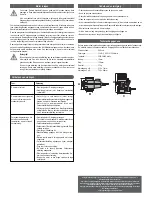
Running in the engine
Recommendation: Use an already mixed brand fuel which usually contains
additional additives which are advantageous for the engine.
If you nevertheless want to mix the fuel yourself, you must use high-quality fuel
components (synthetic oil, nitromethane, methanol).
Before the first startup, the engine needs an initial running-in phase. Thereby, very fine
machining traces on rotating or jointly gliding components are smoothed. Special running-in
fuel usually contains a smaller amount of nitromethane.
Carefully screw in the enclosed main throttle needle (needle with fuel intake) up to the limit
stop; then open it by 2-3 turns. Turning out gives a richer mix, turning in a leaner mix. The initial
running-in phase at low speed (with fully open choke tap and extremely rich mix) should
average 2-4 tank fillings. After each engine running (tank filling), allow for a sufficient cooling
phase.
Afterwards, the mix should be made leaner step by step by screwing in the main throttle needle
and the model can already be used. The final running-in of the engine can, depending on the
model, last several hours. After this phase, you can operate the engine with full power.
Important!
With a new engine, the carburettor setting must be adjusted, from the start, as
rich as possible. It is only in the course of time that one can approximate the
maximum engine power. Now you can also properly adjust the idle speed.
A too rich carburettor setting prevents the engine from running at full power.
However, a setting that is too lean is dangerous for the engine and, sooner or
later, leads to an engine damage!
Troubleshooting
Problem
The engine does not start
Engine stops after a short run-
ning time or after having discon-
nected the start battery
Power decreases after reaching
operating temperature, the en-
gine runs inconsistently
Solution
• Glow plug defective, replace it
• Glow plug does not glow properly; check the leads
and start battery
• Engine gets too much fuel (kicks back); check the
carburettor setting or unscrew the glow plug and let
the engine race several times
• Engine gets too little fuel (does not start); check the
carburettor setting
• Engine does not ingest any fuel; check the fuel
setting and the filters for passage and tightness or
check the carburettor setting
• Glow plug defective, replace it
• Too high water proportion in the fuel; use brand fuel
or keep the fuel canister closed
• Check the carburettor setting
• Carburettor, filter or fuel line dirty; clean them
completely
• Loose glow plug or cylinder head
• Fuel line bent/defective; replace the hose
• Engine becomes too hot; running-in phase is not
carried out correctly
• Change the carburettor setting (use a richer mixture)
• Ensure sufficient cooling
• Engine is set too “sharp”; change the carburettor
setting
• Glow plug defective or wrong glow plug value; use a
different glow plug
• Keep the engine in a dry room with little humidity
Maintenance and service
• Always use a fuel filter between tank and engine.
• Always keep the fuel canister clean.
• Only use brand fuels and synthetic oils!
• Always empty the tank after operation of the model.
• In case that a foreign body penetrates the engine, disassemble the latter and rinse it
generously with fuel. Afterwards, clean all parts with a non-corroding oil.
• Do not disassemble the engine unnecessarily.
• Check the engine for damages and wear when it has not been used for a longer period of
time.
• Keep the engine in a dry room with little humidity.
Technical data
The technical data are details of the manufacturer; no guarantee of correctness! Subject to
change without prior notice.
Displacement: ..................... 2,49ccm
Power: ................................. 1,1kW (1,5hp), 21000 rpm
Engine speed: ..................... 5000-28000 rpm
Bore: .................................... 15mm
Stroke: ................................. 13,6mm
Weight: ................................ 270g
Dimensions A x B: .............. 31,5 x 11mm
Dimensions C x D: .............. 74,6 x 95mm
A
B
C
D
These operating instructions are a publication by Conrad Electronic SE, Klaus-Conrad-Str. 1,
D-92240 Hirschau (www.conrad.com).
All rights including translation reserved. Reproduction by any method, e.g. photocopy, microfilming, or the
capture in electronic data processing systems require the prior written approval by the editor. Reprinting,
also in part, is prohibited.
These operating instructions represent the technical status at the time of printing. Changes in technology
and equipment reserved.
© Copyright 2009 by Conrad Electronic SE.

